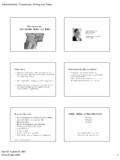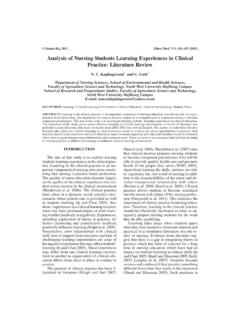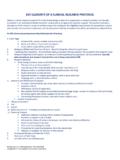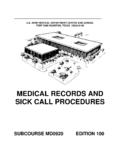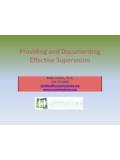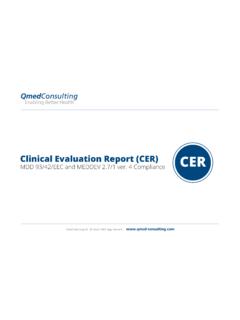Transcription of Practice Guidelines for Postanesthetic Care - …
1 SPECIAL ARTICLEA nesthesiology 2002; 96:742 52 2002 American Society of Anesthesiologists, Inc. Lippincott Williams & Wilkins, Guidelines for Postanesthetic CareA Report by the American Society of Anesthesiologists Task Force onPostanesthetic CarePRACTICE Guidelines are systematically developed rec-ommendations that assist the practitioner and patient inmaking decisions about health care. These recommen-dations may be adopted, modified, or rejected accordingto clinical needs and Guidelines are not intended as standards orabsolute requirements. The use of Practice guidelinescannot guarantee any specific outcome.
2 Practice guide-lines are subject to periodic revision as warranted by theevolution of medical knowledge, technology, and prac-tice. The Guidelines provide basic recommendationsthat are supported by analysis of the current literatureand by a synthesis of expert opinion, open forum com-mentary, and clinical feasibility data (Appendix).A. Definition of Postanesthetic CareThe literature does not provide a standard definitionfor Postanesthetic care. For these Practice Guidelines , Postanesthetic care refers to those activities undertakento manage the patient following completion of a surgicalprocedure and the concomitant primary Purpose of the Guidelines forPostanesthetic CareThe purpose of these Guidelines is to improve postan-esthetic care outcomes for patients who have just hadanesthesia or sedation and analgesia care.
3 This is accom-plished by evaluating available evidence and providingrecommendations for patient assessment, monitoring,and management with the goal of optimizing patientsafety. It is expected that each recommendation will beindividualized according to the needs of each FocusThese Guidelines focus on the perioperative manage-ment of patients with the goal of improving postanes-thetic quality of life, reducing postoperative adverseevents, providing a uniform assessment of recovery, andstreamlining postoperative care and discharge Guidelines apply to patients of all ages who havejust received general anesthesia, regional anesthesia, ormoderate or deep sedation.
4 The Guidelines may need tobe modified to meet the needs of certain patient popu-lations, such as children or the elderly. The Guidelinesdo not apply to patients receiving infiltration local anes-thesia without sedation, patients receiving minimal se-dation (anxiolysis),1or patients receiving intensive ApplicationThe Guidelines are intended for use by anesthesiolo-gists and may also serve as a resource for other physi-cians and healthcare professionals who direct anesthesiaor sedation and analgesia care. General medical supervi-sion and coordination of patient care in the postanesthe-sia care unit (PACU) should be the responsibility of Task Force Members and ConsultantsThe American Society of Anesthesiologists (ASA) ap-pointed a Task Force of 10 members to review thepublished evidence and obtain consultant opinion froma representative body of anesthesiologists.
5 The TaskForce members consisted of anesthesiologists in bothprivate and academic practices from various geographicareas of the United States, and methodologists from theASA Committee on Practice Task Force met its objective in a six-step , original published research studies relevant to post-anesthetic care were reviewed and analyzed. Second,Consultants with expertise in Postanesthetic care andwho Practice or work in various settings ( , academicAdditional material related to this article can be found on theANESTHESIOLOGYWeb site. Go to the following address, click onEnhancements Index, and then scroll down to find the appro-priate article and link.)
6 Developed by the Task Force on Postanesthetic Care: Jeffrey H. Silverstein, (Chair), New York, New York; Jeffrey L. Apfelbaum, , Northbrook, Illinois; JaredC. Barlow, , Grand Island, New York; Frances F. Chung, , Toronto, Ontario;Richard T. Connis, , Woodinville, Washington; Ralph B. Fillmore, , Dothan,Alabama; Sean E. Hunt, , Manchester, New Hampshire; Thomas A. Joas, ,San Diego, California; David G. Nickinovich, , Bellevue, Washington; Mark , , Philadelphia, for publication November 5, 2001. Accepted for publication No-vember 5, 2001. Supported by the American Society of Anesthesiologists, underthe direction of James F.
7 Arens, , Chair of the Committee on PracticeParameters. Approved by the House of Delegates, October 17, 2001. A list ofreferences used to develop these Guidelines is available by writing to theAmerican Society of Anesthesiologists. The list is also available as a with special interest in the statistical analyses used in establishingthese Guidelines can receive further information by writing to the AmericanSociety of Anesthesiologists: 520 North Northwest Highway, Park Ridge, reprint requests to the American Society of Anesthesiologists: 520 NorthNorthwest Highway, Park Ridge, Illinois , V 96, No 3, Mar 2002742and private Practice ) were asked to (1) participate inopinion surveys and (2) review and comment on draftsof the Guidelines .
8 Third, a random sample of activemembers of the ASA was surveyed regarding variouselements of the Guidelines . Fourth, the Task Force heldan open forum at a major national meeting to solicitinput from attendees on the draft Guidelines . Fifth, allavailable information was used by the Task Force indeveloping the Guideline recommendations. Sixth, theConsultants were surveyed to assess their opinions onthe feasibility andfinancial implications of implementingthe Availability and Strength of EvidenceEvidence-based Guidelines are developed by a rigorousanalytic process. To assist the reader, the Guidelinesmake use of several descriptive terms that are easier tounderstand than the technical terms and data that areused in the actual analyses.
9 These descriptive terms aredefined below:The following terms describe thestrengthof scientificdata obtained from the scientific literature:Supportive:There is sufficient quantitative informationfrom adequately designed studies to describe a statis-tically significant relationship (P ) between aclinical intervention and a clinical outcome, :There is sufficient information from casereports and descriptive studies to provide a directionalassessment of the relationship between a clinical in-tervention and a clinical outcome. This type of quali-tative information does not permit a statistical assess-ment of :Qualitative data have not provided a cleardirection for clinical outcomes related to a clinicalintervention and (1) there is insufficient quantitativeinformation or (2) aggregated comparative studieshave found no quantitatively significant differencesamong groups or following terms describe thelackof availablescientific evidence in the literature:Inconclusive.
10 Published studies are available, but theycannot be used to assess the relationship between aclinical intervention and a clinical outcome becausethe studies either do not meet predefined criteria forcontent as defined in the Focus of the Guidelines ordo not provide a clear causal interpretation offindingsdue to research design or analytic :There are too few published studies to in-vestigate a relation between a clinical intervention anda clinical :No studies that address a relationship of interestwere found in the available published following terms describesurvey responsesfor anyspecified issue. Responses are assigned a numeric valueof agree 1, undecided 0, or disagree 1.


